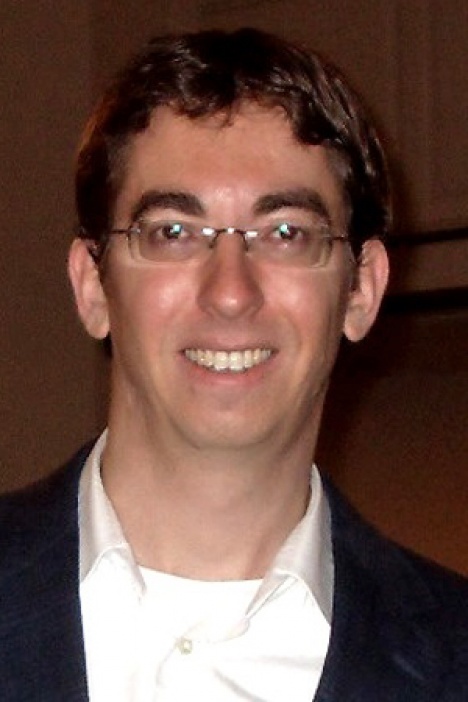Shai Carmi

I am a postdoctoral scientist in Itsik Pe'er’s lab in the Department of Computer Science at Columbia. I work in statistical genetics, developing population genetic theory with applications to human genetic variation data. Specifically, I am interested in the statistical properties of long genomic segments that are shared due to remote relatedness; such segments are valuable to the reconstruction of population histories and efficient genotyping. I am also working on other questions in coalescent theory, such as the distribution of ancestry proportions in admixed populations and the correlation between genotypes of linked loci under different ancestral processes. On the more applied side, I have been leading the analysis of genetic data from The Ashkenazi Genome Consortium. The Ashkenazi Jewish population has undergone a severe bottleneck it its recent history, followed by isolation, and is therefore attractive for genetic studies. Our consortium aims at uncovering all haplotypic variation in that population by sequencing several hundred high-coverage genomes. Our analysis revealed the utility of our data as the definite reference for the population, as well as helped reconstructing its demographic history.
My postdoctoral training is funded by a fellowship from the Human Frontier Science Program. In the past, I completed a short postdoc at Bar-Ilan University in Israel, working on RNA processing in Trypanosoma brucei and RNA and DNA editing in humans. Before that, I studied towards a PhD in statistical physics, again at Bar-Ilan. I developed theory for anomalous diffusion and transport processes in model networks and analyzed the structure of real networks such as the Internet. During my PhD work I received the national Wolf Fund award and the Adams Fellowship of the Israeli Academy of Sciences and Humanities.
PhD, MSc, Bar-Ilan University, Ramat Gan, Israel
Physics
BSc, Bar-Ilan University, Ramat Gan, Israel
Physics
Wilton PR, Carmi S, Hobolth A. The SMC' is a highly accurate approximation to the ancestral recombination graph. Genetics. 2015 May;200(1):343-55.
Carmi S, Hui KY, Kochav E, Liu X, Xue J, Grady F, Guha S, Upadhyay K, Ben-Avraham D, Mukherjee S, Bowen BM, Thomas T, Vijai J, Cruts M, Froyen G, Lambrechts D, Plaisance S, Van Broeckhoven C, Van Damme P, Van Marck H, Barzilai N, Darvasi A, Offit K, Bressman S, Ozelius LJ, Peter I, Cho JH, Ostrer H, Atzmon G, Clark LN, Lencz T, Pe'er I. Sequencing an Ashkenazi reference panel supports population-targeted personal genomics and illuminates Jewish and European origins. Nat Commun. 2014 Sep 9;5:4835.
Carmi S, Palamara PF, Vacic V, Lencz T, Darvasi A, Pe'er I. The variance of identity-by-descent sharing in the Wright-Fisher model. Genetics. 2013 Mar;193(3):911-28.
Carmi S, Borukhov I, Levanon EY. Identification of widespread ultra-edited human RNA. PLoS Genet. 2011 Oct;7(10):e1002317.
Carmi S, Church GM, Levanon EY. Large scale DNA editing of retrotransposons accelerates mammalian genome evolution. Nat Commun. 2011 Nov 1;2:519.
Gupta SK, Carmi S, Waldman Ben-Asher H, Tkacz ID, Naboishchikov I, Michaeli S. Basal splicing factors regulate the stability of mature mRNAs in Trypanosomes. J Biol Chem. 2013 Feb 15;288(7):4991-5006.
Carmi S, Havlin S, Kirkpatrick S, Shavitt Y, Shir E. A model of Internet topology using k-shell decomposition. P. Natl. Acad. Sci. USA 2007 Jul 3;104:11150-11154
Carmi S, Krapivsky PL, ben-Avraham D. Partition of networks into basins of attraction. Phys. Rev. E 2008 Dec 22;78 066111
Carmi S, Havlin S, Song C, Wang K, Makse H. Energy-landscape network approach to the glass transition. J. Phys. A: Math. Theor. 2009;42(10):105101.
Carmi S, Carter S, Sun J, ben-Avraham D. Asymptotic behavior of the Kleinberg model. Phys. Rev. Lett. 2009 Jun 11;102:238702.
Carmi S, Turgeman L, Barkai E. On distributions of functionals of anomalous diffusion paths. J. Stat. Phys. 2010;141(6):1071.
Carmi S, Barkai E. Fractional Feynman-Kac equation for weak ergodicity breaking. Phys. Rev. E 2011;84:061104.